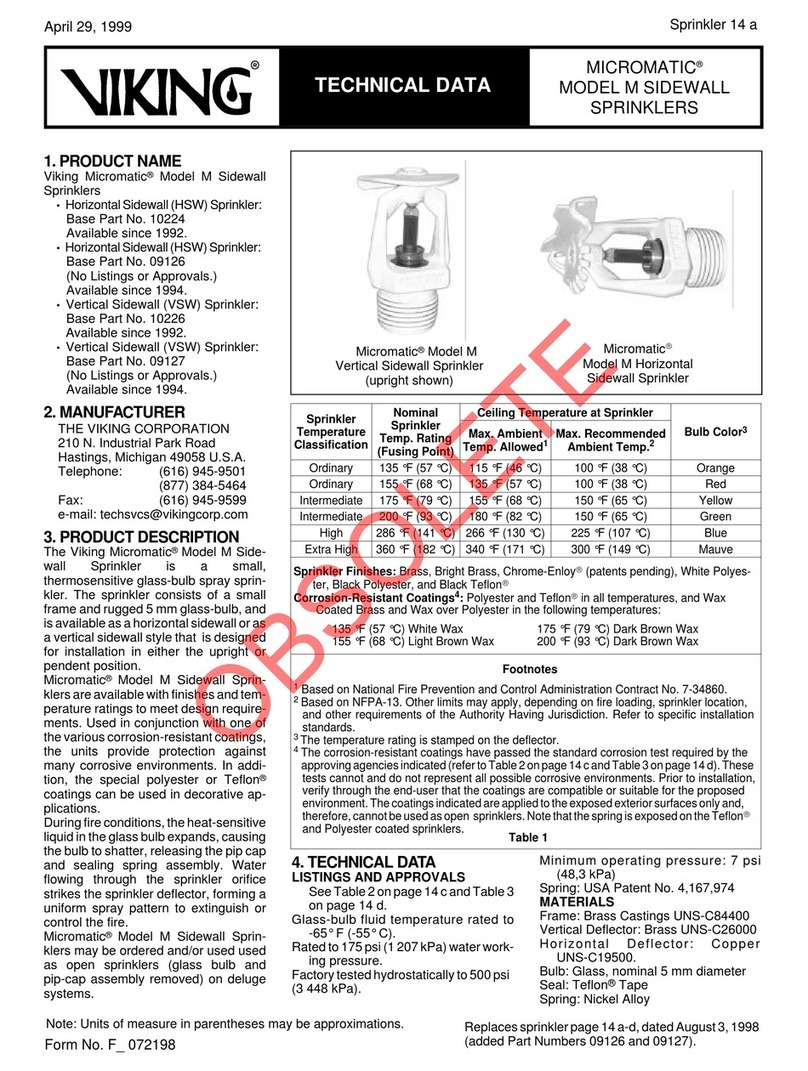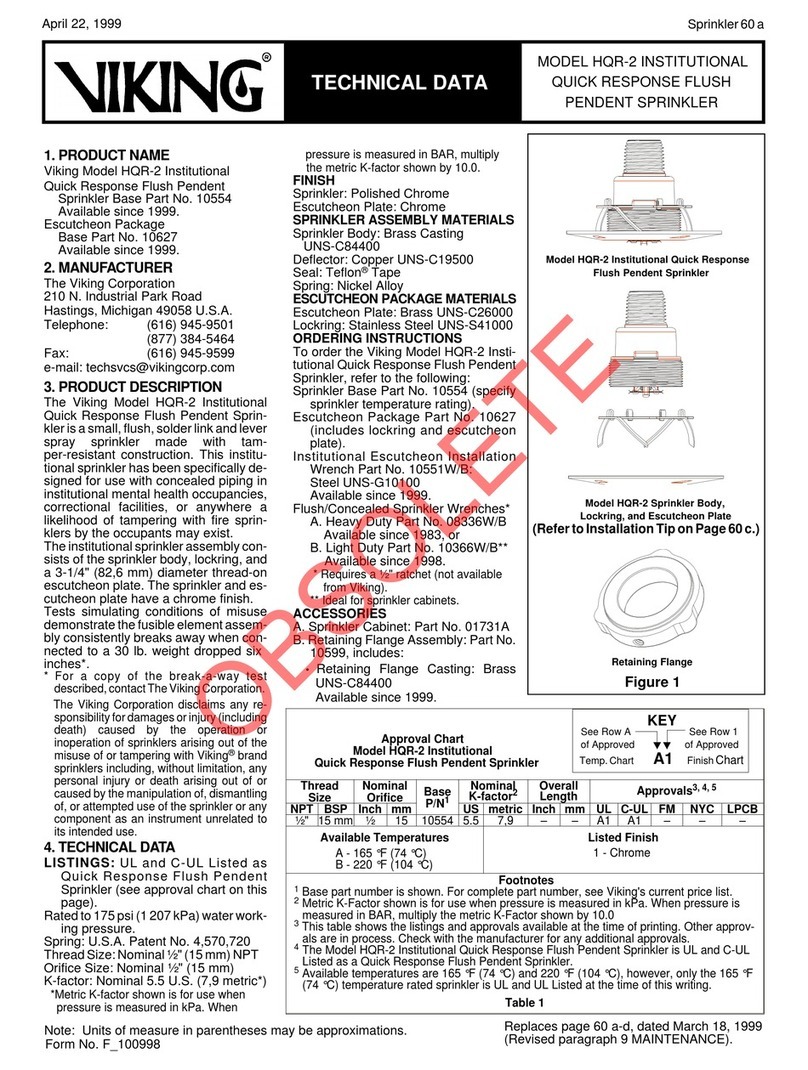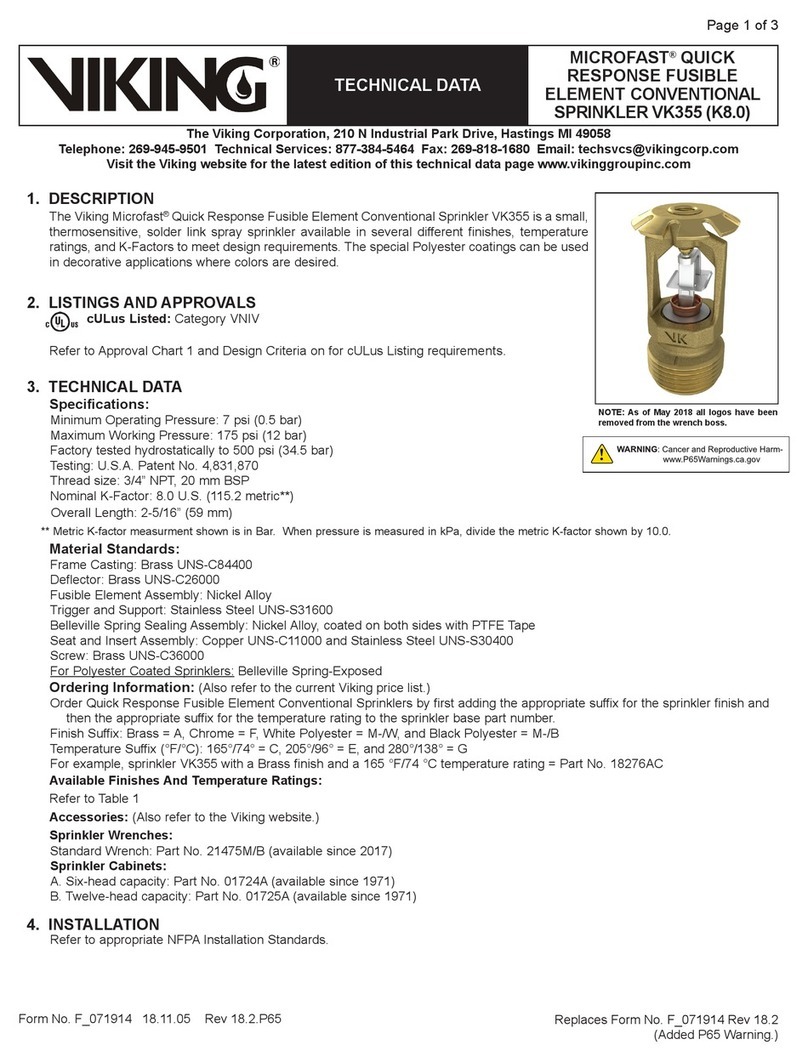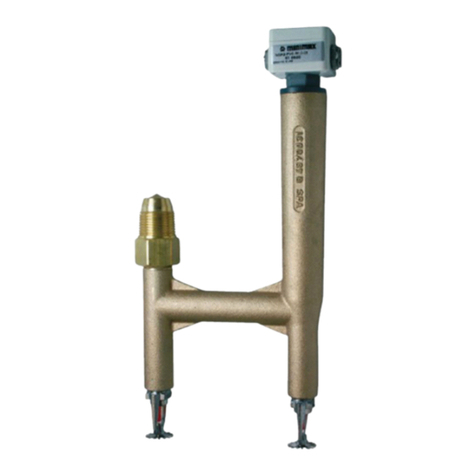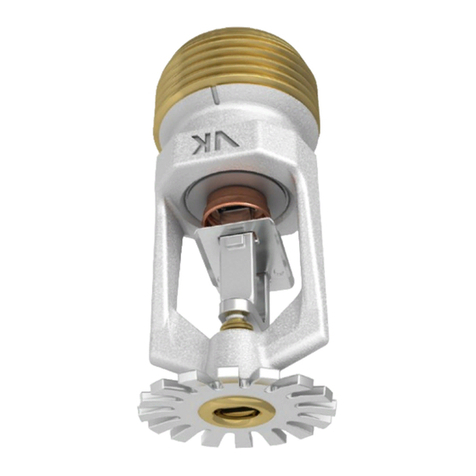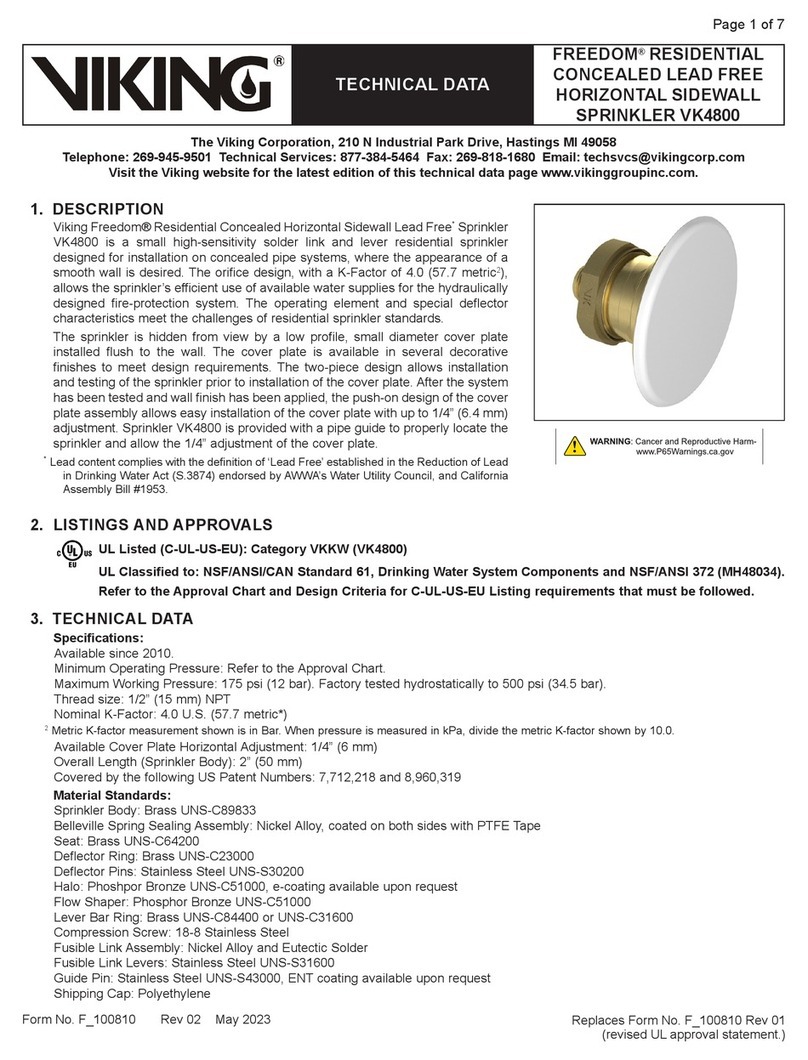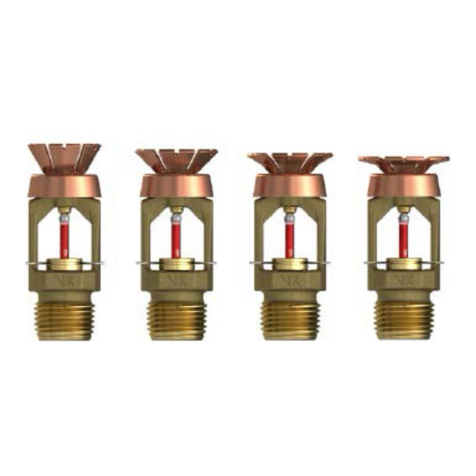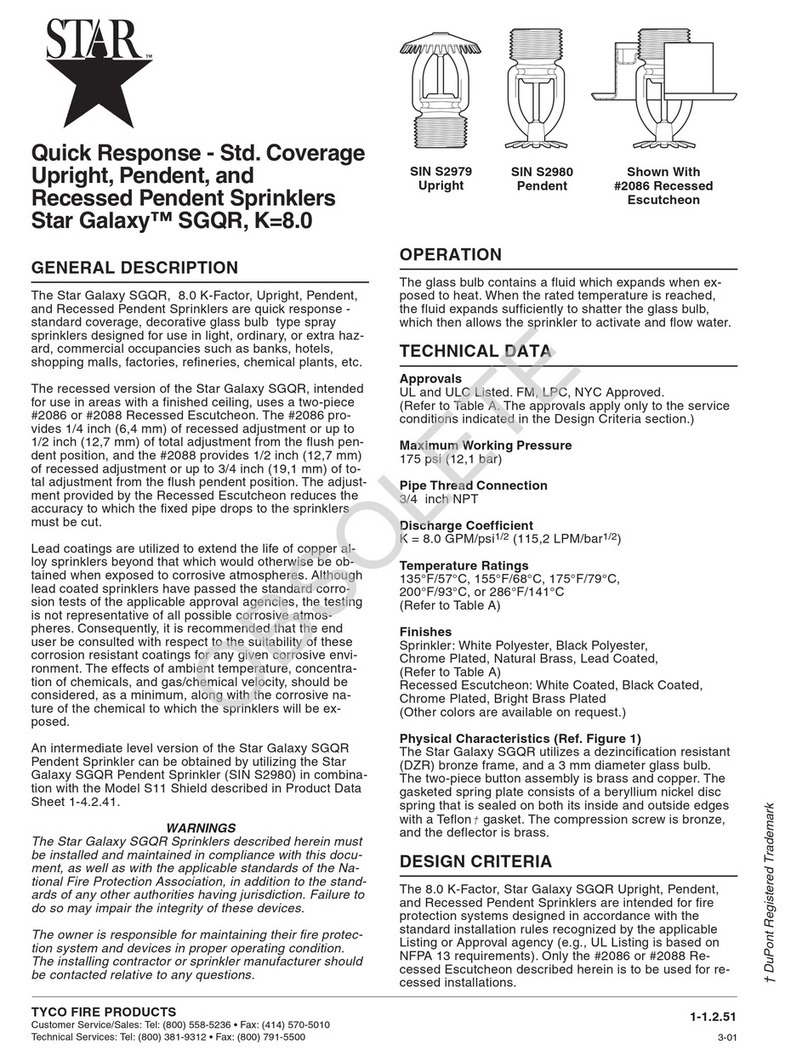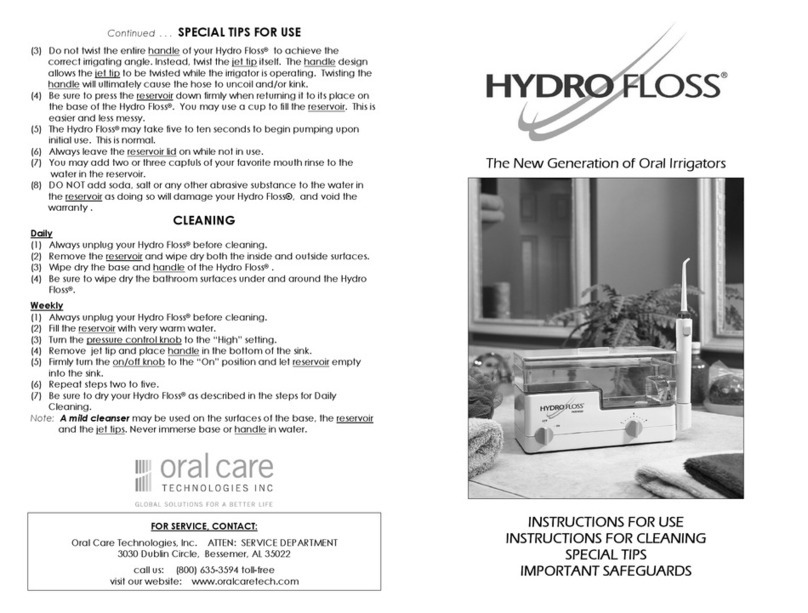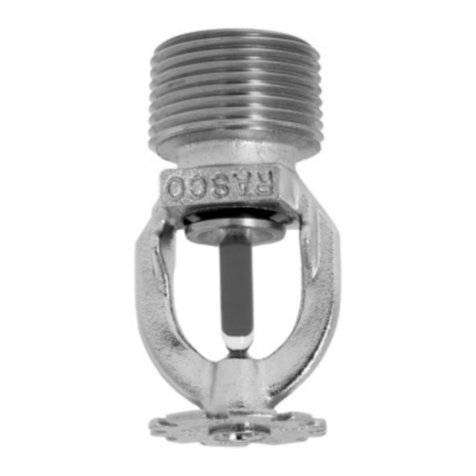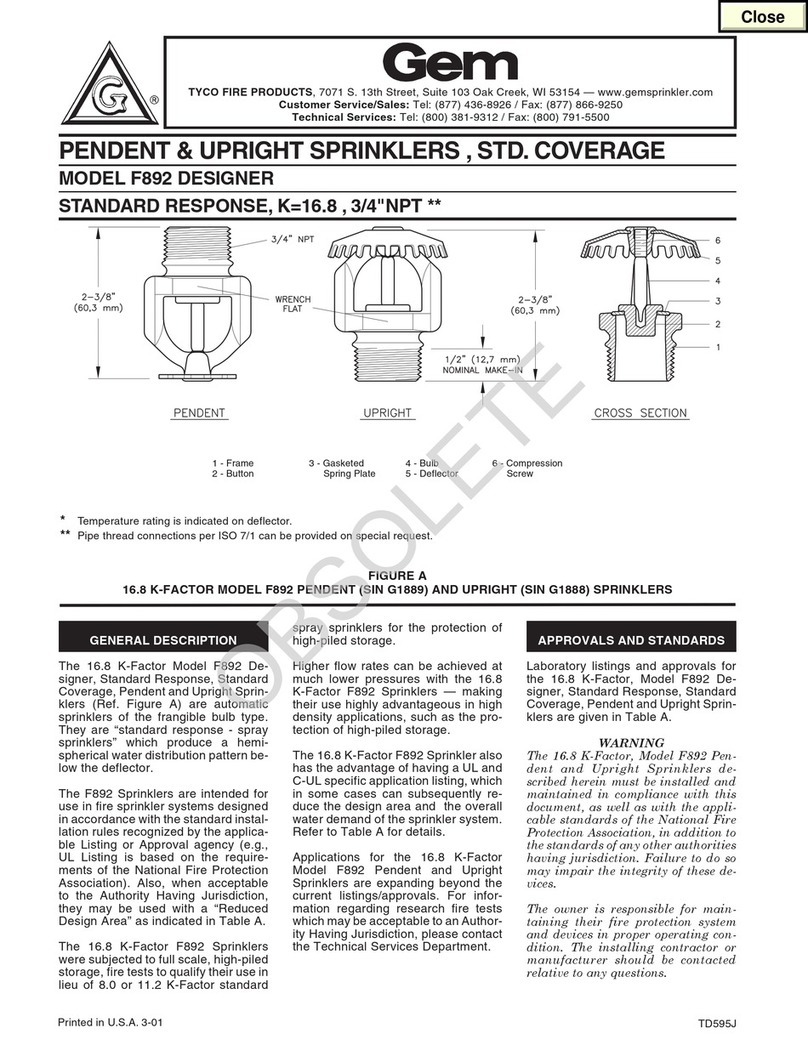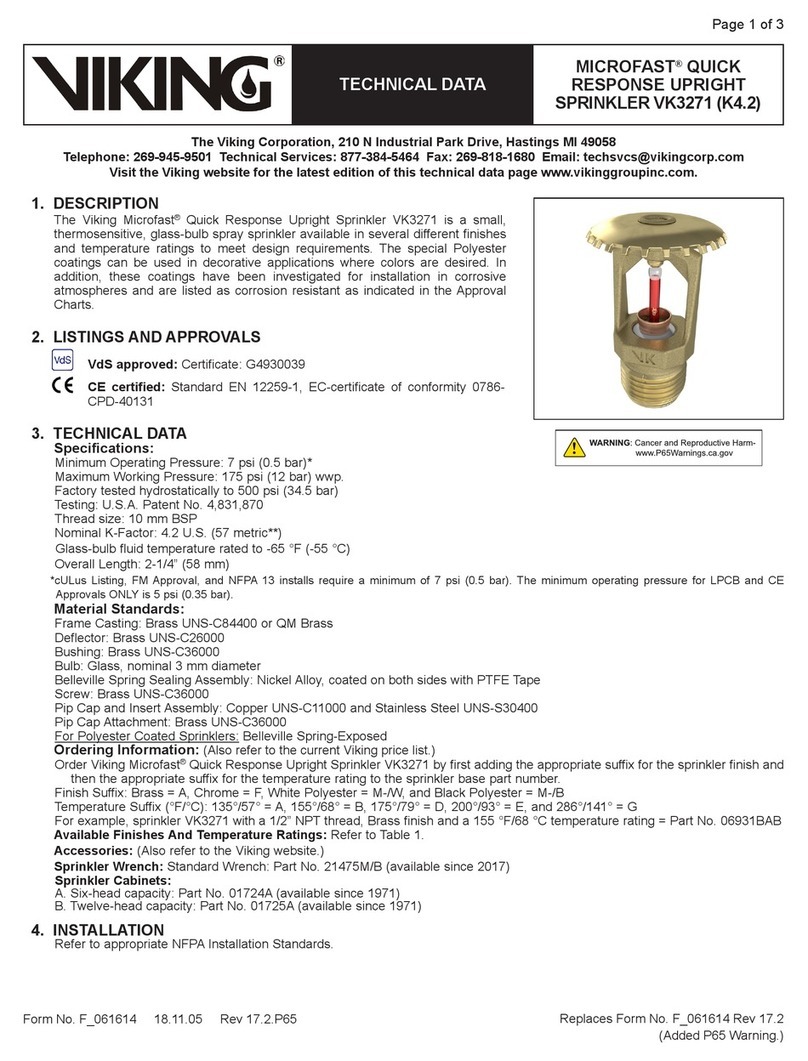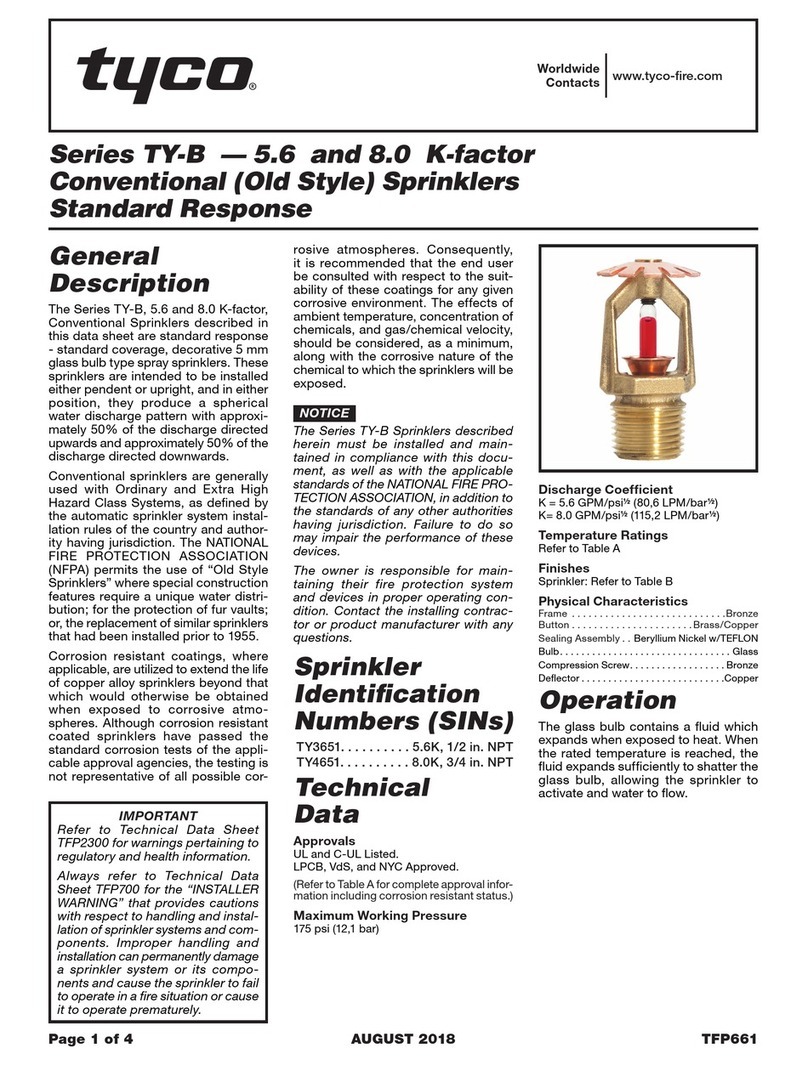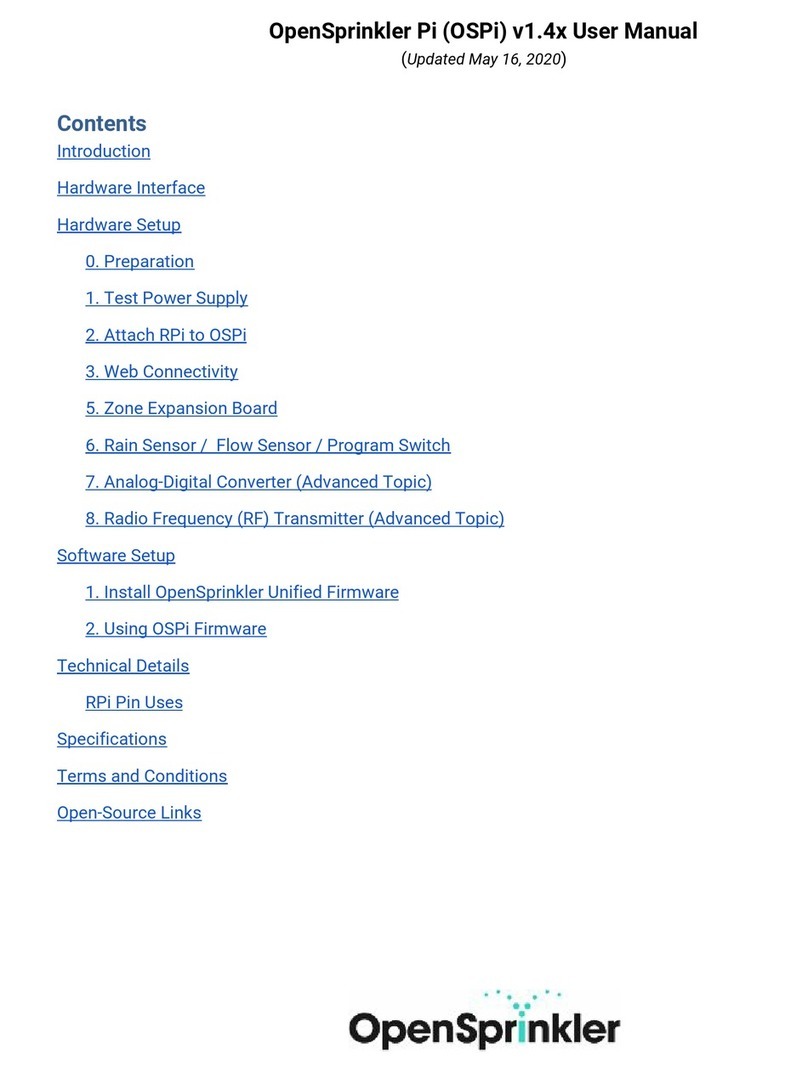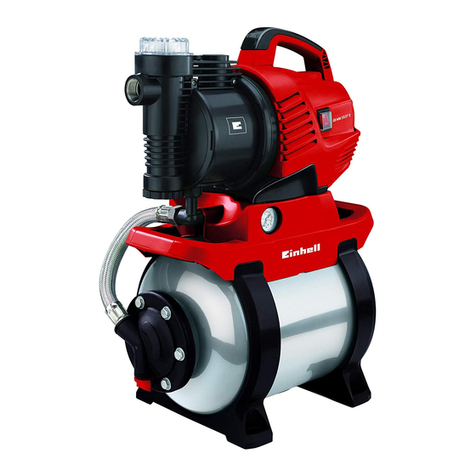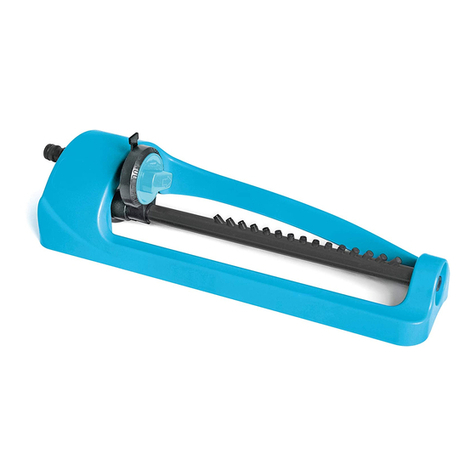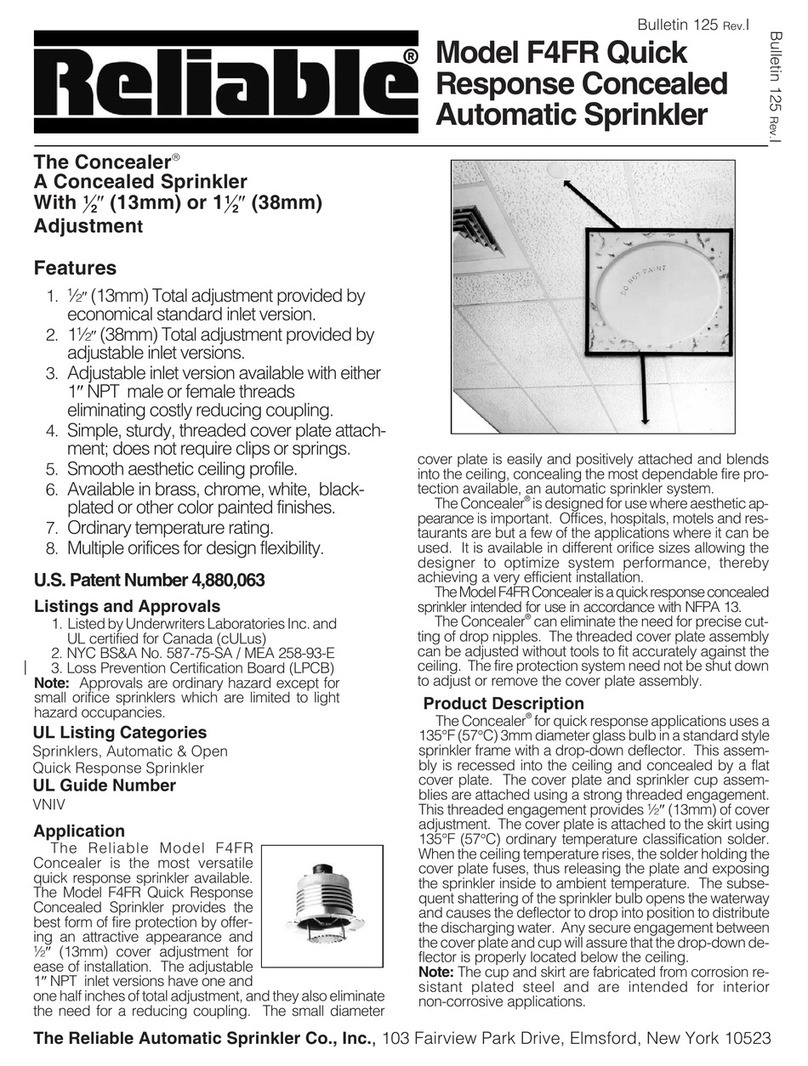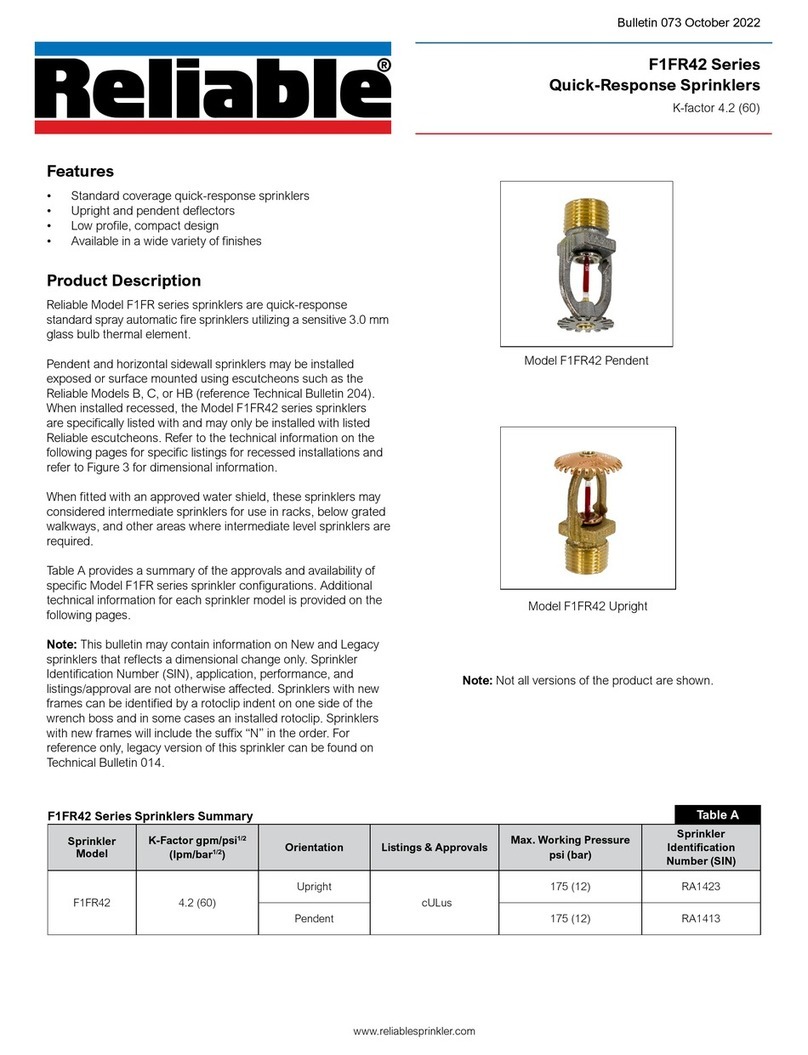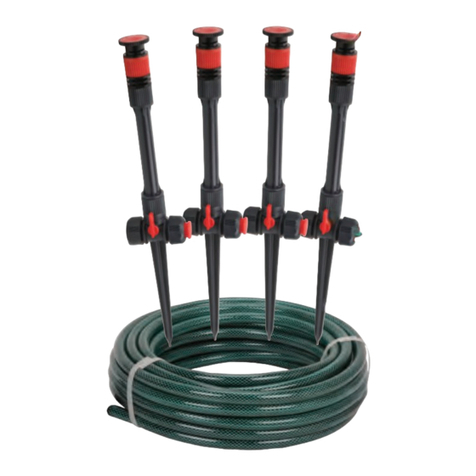
SPECIFIC APPLICATION
WINDOW SPRINKLERS
(K5.6)
TECHNICAL DATA
Form No. F_042519 21.09.28 Rev 21.3
© 2021 Viking Group Inc. All rights reserved
Page 5 of 10
The Viking Corporation, 210 N Industrial Park Drive, Hastings MI 49058
T
elephone:
269-945-9501
T
echnical
Services:
877-384-5464
Fax:
269-818-1680
Email:
[email protected]Visit the Viking website for the latest edition of this technical data page www.vikinggroupinc.com
DESIGN CRITERIA - Pendent Vertical Sidewall Window Sprinkler VK960
(Also refer to the Approval Chart.)
Continued from previous page.
Interior protection sprinklered building: Identify which compartmented area has the most hydraulically demanding window
sprinklers. Calculate up to the most demanding 46.5 linear feet (14.2 linear meters) of window sprinklers on one side of the glazing.
The 46.5 linear feet (14,2 linear meters) is based upon 1.2 x the square root of the system area of operation, when the system
area of operation is 1500 ft2 (140 m2). in accordance with NFPA 13 Light/Ordinary Hazard density curves.
Where the area of Glazing is less than 46.5 linear feet (14.2 linear meters), all window sprinklers on one side shall be calculated.
If an area reduction for quick response sprinklers is utilized, the linear length of the calculated window sprinklers may be reduced,
but in no case shall be less than 36 linear feet (1.2 x √900).
If a single fire can be expected to operate window sprinklers and sprinklers within the design area of a hydraulically calculated
system, the water demand of the window sprinklers shall be added to the water demand of the hydraulic calculations and shall be
balanced to the calculated area demand.
If the window sprinklers are located in an area other than the hydraulic design area, the demand of the window sprinklers is not
required to be added to the demand of the remote hydraulic design area. However, it is necessary to prove hydraulically the
simultaneous operation of the window sprinklers and the ceiling sprinklers adjacent to the window sprinklers.
Interior protection of non-sprinklered building: Calculate all sprinklers on the most demanding side of the glazing assembly
within the enclosure.
Exterior exposure protection: Calculate all sprinklers controlled by the deluge valve using the design requirements of NFPA.
Duration of water supply: Duration of water supply must comply with requirements of NFPA. If window sprinklers are used to
provide the equivalency of a fire rating, the water supply must be capable of supplying water for the required rating period.
Figure 3: Typical Non-Operable Windows
Figure 3A Figure 3B Figure 3C
Inside
VIEW FROM TOP VIEW FROM TOP VIEW FROM TOP
Inside
Exposure
Side
Exposure
Side
Inside InsideOutside Outside
When acceptable to the Authority
Having Jurisdiction the window
sprinklers may be used in either a
sprinklered or unsprinklered building
to protect non-operable window
openings that are in an interior fire
separation, the window sprinklers are
installed on both sides of the window
in the fire separation.
When acceptable to the Authority Having
Jurisdiction the window sprinklers
may be used in either a sprinklered
or unsprinklered building to protect
non-operable window openings that
are part of a fire separation provided
in jurisdictions where exterior spatial
separation is defined as protecting an
adjacent building from a fire in your
building, window sprinklers are installed
on the interior side of the glass.
When acceptable to the Authority Having
Jurisdiction the window sprinklers
may be used in either a sprinklered or
unsprinklered building to protect non-
operable window openings that are part of
a fire separation provided in jurisdictions
where exterior spatial separation is
defined as protecting your building from
a fire in adjacent building, open window
sprinklers are installed on the exterior
side of the glass.





